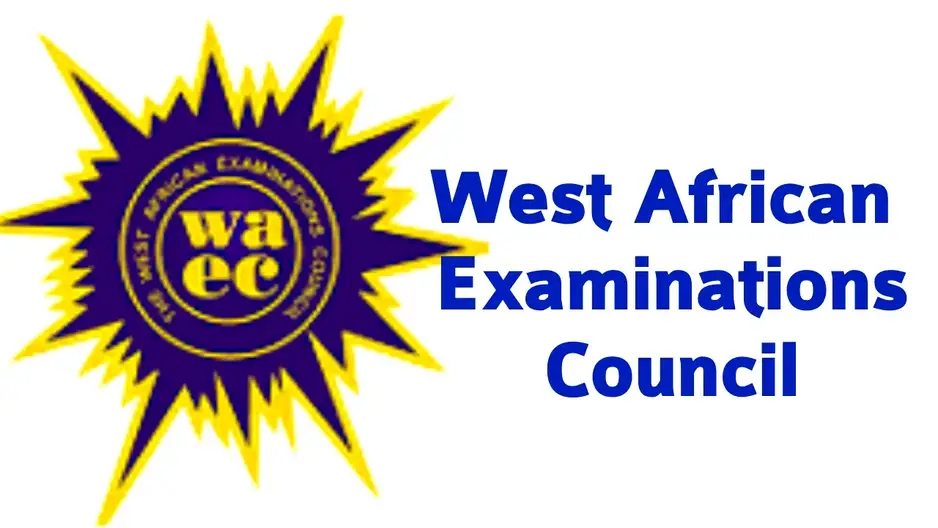
It’s crucial to study the WAEC Chemistry syllabus if you’re preparing for the exam. This syllabus outlines the aims, objectives, notes, and format for the Chemistry exam.
Studying the Chemistry syllabus is essential for effective exam preparation as it provides guidance on the topics to cover and highlights important concepts to focus on.
Preparation for the exam without using the Chemistry syllabus is akin to farming without proper agricultural tools – it’s likely to result in low productivity.
Make sure to kickstart your exam preparations by thoroughly going through the syllabus.
This post includes the Chemistry syllabus and recommended textbooks from the West African Examination Council (WAEC).
Feel free to drop any questions you may have in the comment section. I’m here to assist you.
WAEC Syllabus for Chemistry
This syllabus is drawn purposely for examination, hence the topics are not necessarily arranged in the order in which they should be taught.
The following assumptions were made in drawing of the syllabus:
- That candidate must have covered the Integrated Science/Basic Science or General Science and Mathematics syllabuses at the Junior Secondary School (JSS)/Junior High School (J.H.S) level;
- That candidate would carry out as many of the suggested activities and project work as possible, and consequently develop the intended competencies and skills as spelt out in the relevant Chemistry teaching syllabuses;
- That schools which offer the subject have well-equipped laboratories.
Note: Candidates are required to have knowledge of the significant figures, S.I. units and the conventional/IUPAC system of nomenclature.
Aims
The aims and objectives of the syllabus are to assess candidates’
- understanding of basic chemistry concepts;
- level of acquisition of laboratory skills including awareness of hazards and safety measures;
- level of awareness of the inter-relationship between chemistry and another discipline;
- level of awareness of the linkage between chemistry and industry/environment/everyday life in terms of benefits and hazards;
- skills of critical and logical thinking.
Examination Scheme
There shall be three papers – Papers 1, 2 and 3 all of which must be taken.
Paper 1 and 2 shall be composite papers to be taken in one sitting.
Paper 1
Will consist of fifty multiple-choice objective questions drawn from Section A of the syllabus (ie the portion of the syllabus which is common to all candidates).
Candidates will be required to answer all the questions within 1 hour for 50 marks.
Paper 2
It will be a 2-hour essay paper covering the entire syllabus and carrying 100 marks. The paper will be in two sections; Sections A and B.
Section A
Will consist of ten short structured questions drawn from the common portion of the syllabus. (i.e. Section A of the syllabus).
Candidates will be required to answer all the questions for 25 marks.
Section B
Will consist of two questions from the common portion of the syllabus (i.e. Section A of the syllabus) and two other questions from the section of the syllabus which is peculiar to the country of the candidate (i.e. either Section B or C of the syllabus).
Candidates will be required to answer any three of the questions. Each question shall carry 25 marks.
Paper 3
This shall be a 2-hour practical test for school candidates or 1 hour 30 minutes alternative to a practical work test for private candidates.
Each version of the paper shall contain three compulsory questions and carry 50 marks.
The questions shall be on the following aspects of the syllabus:
- One question on quantitative analysis;
- One question on qualitative analysis;
The third question shall test candidates’ familiarity with the practical activities suggested in their teaching syllabuses.
WAEC Chemistry Syllabus
Introduction to Chemistry
- Measurement of physical quantities.
- Scientific measurements and their importance in chemistry.
- Scientific Methods
Structure of the Atom
- Gross features of the atom
- Atomic number/proton number, number of neutrons, isotopes, atomic mass, mass number
- Relative atomic mass (Ar) and relative molecular mass (Mr) based on the Carbon-12 scale
- Characteristics and nature of matter.
- Particulate nature of matter: physical and chemical changes
- Electron Configuration
- Orbitals
- Rules and principles for filling in electrons
Standard Separation Techniques for Mixtures
- Classification of mixtures.
- Separation techniques
- Criteria for purity
Periodic Chemistry
- Periodicity of the elements.
- Different categories of elements in the periodic table.
- Periodic law
- Trends on the periodic table
- Periodic gradation of the elements in the third period (Na – Ar)
- Reactions between acids and metals, their oxides and trioxocarbonates (IV)
- Periodic gradation of elements in group seven, the halogens: F, Cl, Br and I
- Elements of the first transition series 21Sc – 30Zn
Chemical Bonds
- Interatomic bonding
- Formation of ionic bonds and compounds.
- Properties of ionic compounds.
- The naming of ionic compounds.
- Formation of covalent bonds and compounds.
- Properties of covalent compounds.
- Coordinate (dative) covalent bonding
- Shapes of molecular compounds.
- Metallic Bonding
- Factors influencing its formation.
- Properties of metals.
- Intermolecular bonding
- Intermolecular forces in covalent compounds
- Hydrogen bonding
- van der Waals forces
- Comparison of all bond types
Stoichiochemistry and Chemical Reactions
- Symbols, formulae and equations.
- chemical symbols
- Empirical and molecular formulae
- Chemical equations and IUPAC names of chemical compounds
- Laws of chemical combination
- Amount of substance
- Mole ratios
- Solutions
- Concentration terms
- Standard solutions.
- Preparation of solutions from liquid solutes by the method of dilution
States of Matter
- Kinetic theory of matter.
- Changes of state of matter.
- Diffusion
- Gases
- Characteristics and nature of gases
- The gas laws
- Laboratory preparation and properties of some gases.
- Liquids
- vapour and gases.
- Solids
- Characteristics and nature
- Types and structures
- Properties of solids.
- Structures, properties and uses of diamond and graphite.
- Determination of melting points of covalent solids.
Energy and Energy Changes
- Energy and enthalpy
- Description, definition and illustrations of energy changes and their effects
Acid, Bases and Salts
- Definitions of acids and bases.
- Physical and chemical properties of acids and bases.
- Acids, bases and salts as electrolytes.
- Classification of acids and bases.
- Concept of pH
- Salts
- Laboratory and industrial preparation of salts
- Uses
- Hydrolysis of salt.
- Deliquescent, efflorescent and hygroscopic compound.
- Acid-Base indicators
- Acid-Base titration
Solubility of Substances
- General principles
- Practical application of solubility
Chemical Kinetics and Equilibrium System
- Rate of reactions:
- Factors affecting rates
- Theories of reaction rates
- Analysis and interpretation of graphs
- Equilibrium:
- General Principle
- Le Chatelier’s principle
REDOX Reactions
- Oxidation and reduction process.
- Oxidizing and reducing agents.
- Redox equations
- Electrochemical cells
- Standard electrode potential
- Drawing of cell diagram and writing cell notation
- e.m.f of cells;
- Application of Electrochemical cells.
- Electrolysis
- Electrolytic cells
- Principles of electrolysis
- Factors influencing discharge of species;
- Faraday’s laws
- Practical application
- Corrosion of metals
Chemistry of Carbon Compounds
- Classification
- Functional group
- Separation and purification of organic compounds.
- Petroleum/crude oil
- Determination of empirical and molecular formulae and molecular structures of organic compounds.
- General properties of organic compounds:
- Homologous series
- Isomerism.
- Alkanes
- Sources, properties
- Uses.
- Alkenes
- Sources and properties
- Uses
- Laboratory detection.
- Alkynes
- Sources, characteristic properties and uses
- Chemical reactions.
- Benzene
- Structure and physical properties;
- Chemical properties
- Alkanols
- Sources, nomenclature and structure;
- Classification
- Physical properties
- Chemical properties
- Laboratory test
- Uses.
- Alkanoic acids
- Sources, nomenclature and structure;
- Physical properties
- Chemical properties
- Laboratory test
- Uses
- Alkanoates as derivatives of alkanoic acids:
- Sources, nomenclature, preparation and structure;
- Physical properties
- Chemical properties
- Uses
Chemistry, Industry and the Environment
- Chemical industry
- Pollution: air, water and soil pollution
- Biotechnology
Basic Biochemistry and Synthetic Polymers
- Proteins:
- Sources and properties
- Uses of protein
- Amino acids
- Fats/oils
- Sources and properties;
- The general structure of fats/oils
- Preparation of soap
- Uses of fats/oils.
- Carbohydrates
- Sources and nomenclature;
- Properties
- Carbohydrates as examples of polymers;
- Uses
- Synthetic polymers:
- Properties;
- Uses of polymers
WAEC Chemistry Practicals
General Skills and Principles
Candidates will be expected to be familiar with the following skills and principles:
- Measurement of mass and volume;
- Preparation and dilution of standard solutions;
- Filtration, recrystallisation and melting point determination;
- Measurement of heats of neutralization and solutions;
- Determination of pH value of various solutions by colorimetry;
- Determination of rates of reaction from concentration versus time curves;
- Determination of equilibrium constants for a simple system.
Quantitative Analysis
Acid-Base Titrations
The use of standard solutions of acids and alkalis and the indicators; methyl orange, methyl red and phenolphthalein to determine the following:
- The concentrations of acid and alkaline solutions;
- The molar masses of acids and bases and water of crystallization.
- The solubility of acids and bases;
- The percentage purity of acids and bases;
- Analysis of Na2CO3/NaHCO3 mixture by double indicator methods (Ghanaians only).
- Stoichiometry of reactions.
Redox Titrations
Titrations of the following systems to solve analytical problems:
- Acidic MnO4– with Fe2+;
- Acidic MnO4– with C2O42-;
- I2 in KI versus S2O32-.
Qualitative Analysis
No formal scheme of analysis is required.
- Characteristic tests of the following cations with dilute NaOH(aq) and NH3(aq); NH4; Ca2+; Pb2+; Cu2+; Fe2+; Fe3+; Al3+; and Zn2+.
- Confirmatory tests for the above cations.
- The characteristic reaction of dilute HCl on solids or aqueous solutions and conc. H2SO4 on solid samples of the following: Cl– ; SO32- ; CO32- ; NO3– and SO42-.
- Confirmatory tests for the above anions
- Comparative study of the halogens; displacement reactions.
- Characteristic tests for the following gases: H2; NH3; CO2; HCl and SO2.
- Characteristic test tube reactions of the functional groups in the following simple organic compounds: Alkenes; alkanols; alkanoic acids, sugars (using Fehling’s and Benedict’s solutions only); starch (iodine test only) and proteins (using the Ninhydrin test, Xanthoporteic test, Biuret test and Millon’s test only).
WAEC Chemistry Textbooks
Here is the list of the WAEC recommended textbooks for Chemistry;
- New School Chemistry for Senior Secondary Schools, Ababio, O. Y. (2009), (Fourth edition),
- Onitsha: Africana FIRST Publishers Limited.
- Senior Secondary Chemistry, Bajah, S.T.; Teibo, B. O., Onwu, G.; and Obikwere, A. Book 1 (1999), Books 2 and 3 (2000). Lagos: Longman.
- Understanding Chemistry for Schools and Colleges, Ojokuku, G. O. (2012, Revised Edition),
- Zaria: Press-On Chemresources.
- Essential: Chemistry for Senior Secondary Schools, (2008), 2nd Edition, I. A. Odesina, Lagos: Tonad Publishers Limited.
- Countdown to WASSCE/SSCE, NECO, JME Chemistry, Uche, I. O.; Adenuga, I. J. and Iwuagwu, S. L. (2003). Ibadan: Evans.

